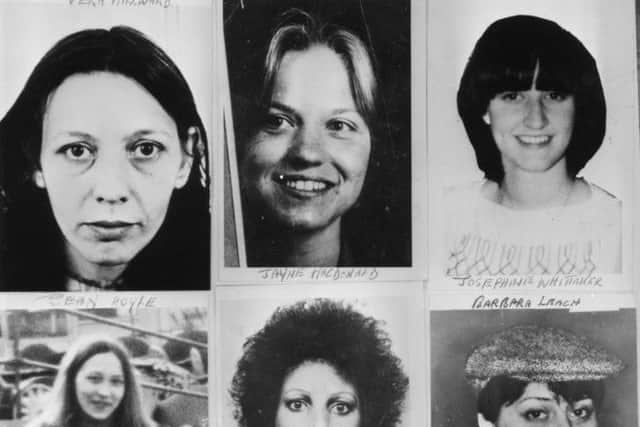Christa Ackroyd: Why the victims should be the focus not the Yorkshire Ripper
You may have watched it because you lived through it and remember the dark days of looking amongst the shadows for the killer who kept women of all ages, from all backgrounds, in all our communities, paralysed with fear.
I watched it because I was there. I was there on the misty morning in Savile Park in Halifax when Josephine Whitaker’s body was found. I saw her lying on the ground. I was there in the neat semi detached house in Kettering when the parents of a young girl told me the only way they could carry on was to imagine their only daughter was still away at university in Bradford. I was there when Olive Smelt who had survived his vicious attack wept when she told me detectives didn’t believe her when she told them her attacker had a Yorkshire accent and that they had decided it was her husband who had struck her from behind and left her for dead. And I was there when people whispered she must have been up to no good when she walked home alone after a night out at the pub with her friend. That, as much as the life changing injuries she survived, was to almost destroy her.
Advertisement
Hide AdAdvertisement
Hide AdI was also there at the Old Bailey watching with Olive, other survivors and the families of the 13 women who were killed, when Peter William Sutcliffe was found guilty of murder and not manslaughter, there when the jury decided he was bad not mad. And I watched this pathetic, insignificant little man show no remorse, no emotion as he was led away to begin a life sentence.But even as Sutcliffe was taken down, the impact of his heinous crimes was far from over. Over the past four decades Sutcliffe has revelled in his notoriety. He has been allowed contact with the deluded, dysfunctional women who believed they have fallen in love with a man so evil he relishes the headlines that continue to be splashed across the front pages. And every time the faces of the 13 who died at his hands are consigned to a grid of black and white photographs labelled ‘victims’. But they were so much more. They were mothers, daughters, sisters, and friends. Some were wrongly labelled as prosititutes, because that would make them fit the profile of a man who claimed to hate them. Some were described as ‘promiscuous’ or ‘good time girls’, as if meeting friends for a drink without their husbands meant they had deliberately put themselves in harms way. Others were described as ‘innocent’ the assumption being that the killer had made a mistake in choosing them to die. This attitude, this terrible judgmental way so many were portrayed, is the legacy of the crime that lives on today and why I will be watching the documentaries and have read the new book which aims to put the women to the fore and leave their killer in the shadows. About time too.


I still have issues over the way things are reported about the case. I often cringe at what I think are gratuitous details or even images of Sutcliffe’s victims and the descriptions of how they died. But that is because I care what their families read or hear about their loved ones. Some of those involved became my friends. Some of them still are. I remember Barbara Leach’s father David, telling me 40 years ago this year he would read every book written, watch every film ever made to see what they were saying about his daughter because “she is not here to stand up for herself”. He has since died and her family moved to New Zealand. But there are many who still suffer the burden of what happened to their loved ones and how they were labelled then. Perhaps even still. Now if the tables are turned and the focus is firmly placed on those who died, that is a victory for common decency. There are important lessons to be learned today including how female victims of crime are often portrayed in court and in the media, how the perpetrators of crime are still the subject of endless documentaries while their victims and their lives, hopes and dreams are largely ignored. Any publication or TV series that aims to redress the balance is to be welcomed. But in this case and all those that follow I would simply ask every journalist and writer to remember that while for them this may just be another story, for others the way they describe what happened and those it happened to has far reaching consequences. If I have learned anything during my 40 years as a journalist this is the most important lesson.